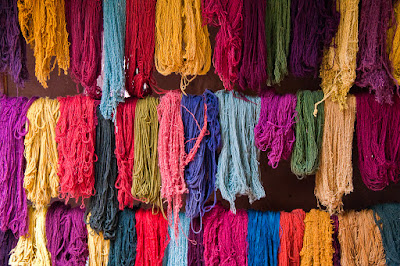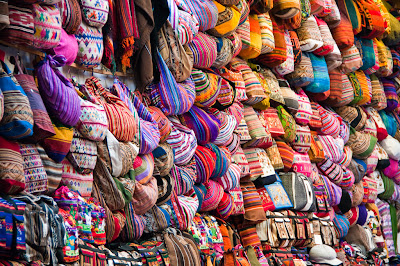As Kermit said, “It’s not easy being green.” I (Penny) went clothes shopping the other day, and I focussed entirely on style and price. I forgot to consider the environment, and my purchases didn’t benefit local businesses. Next time I’ll do better. Here are some ideas.
Clothes
Did you know that growing cotton uses almost 25% of all the insecticides in the world and over 10% of all pesticides? It takes approximately one pound of cotton to make a t-shirt, and it will have been sprayed with one third of a pound of pesticides. Sheep that are being raised for wool in the US are treated with 14,000 pounds of pesticides a year.
Better Options: Look for organic cotton or linen, hemp, and bamboo. Linen is made from flax that grows well without pesticides or insecticides. An acre of land planted with hemp yields two to three times more fibre than cotton – without the chemicals. Bamboo is one of the fastest-growing plants; it can sprout from 1 to 4 feet per day and it naturally resists pests and many bacteria.
Shop Local: Luna + Hill sells clothing that is Canadian-made, organic, and sustainable. Ten Tree, a Regina-based company, wants to ensure that all their clothing is manufactured responsibly. They plant 10 trees for every piece of their clothing that is purchased.
Shoes & Accessories
Leather may be a renewable resource, but tanning the hides uses a tremendous amount of water and toxic chemicals, creating dangerous effluent discharge. Some manufacturers in Italy and Mexico are using less toxic processes, but it will take a while before this practice becomes widespread.
Better Options: Look for shoes made from synthetic or recycled materials. Give your shoes a second life through programs such as Brainsport’s Free Shoe Day.
Shop Local: Escape Sports carries fair-trade certified SoleRebels footwear that is made in Ethiopia from recycled and organic materials. Pedestrian now sells shoes from Oliberté, an African company that is working hard to reduce its environmental impact.
The Better Good carries a wide variety of sustainable goods. The Ressac bag is durable and waterproof – like leather – but it’s made from punctured inner tubes.
How many outfits do you have in your closet that you’ve worn once and may never wear again?
Better options: Buying less clothing is one of the most ecofriendly options. But it can be boring. Why not organize a clothing swap or shop at secondhand clothing stores?
Shop Local: Better Off Duds specializes in secondhand clothing, with a focus on retro attire and quality classics. The Princess Shop loans graduation dresses and accessories to female students in need.
Laundry
Traditional dry cleaning involves submerging clothes in petroleum-based liquid chemicals. The most common chemical is perchloroethylene (PERC), a possible carcinogen and a hazardous pollutant.
Clothes dryers use a lot of energy, emitting almost 1500 pounds of CO2 annually.
Better Options: Look for a “wet” cleaner. This method uses water and non-toxic, biodegradable detergents. Or you may be able to find a dry cleaner that is using liquid CO2 or liquid silicone.
Wash clothes less frequently. Buy a clothing rack and air dry your laundry. Buy energy-efficient appliances.
Shop Local: We’re not aware of any environmentally-friendly dry cleaners in Saskatoon. If you know of one, please let us know.
Resources
The following books are available from the Saskatoon Public Library:
Green Chic: Saving the Earth in Style
Big Green Purse: Use your Spending Power to Create a Cleaner, Greener World
The Rough Guide to Shopping with a Conscience
Ethical Chic: The Inside Story of the Companies We Think We Love
David Suzuki’s Queen of Green blog offers green living tips and recipes.

